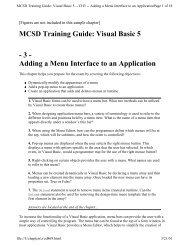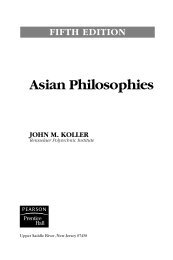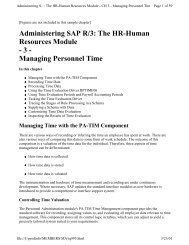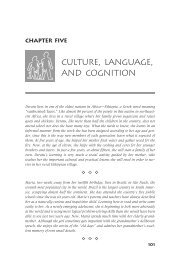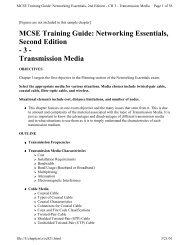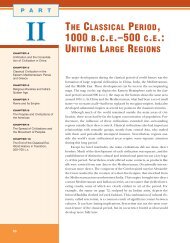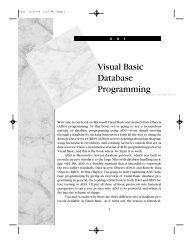Special Edition Using SAP R/3, Third Edition
Special Edition Using SAP R/3, Third Edition
Special Edition Using SAP R/3, Third Edition
You also want an ePaper? Increase the reach of your titles
YUMPU automatically turns print PDFs into web optimized ePapers that Google loves.
<strong>Special</strong> <strong>Edition</strong> <strong>Using</strong> <strong>SAP</strong> R/3, <strong>Third</strong> <strong>Edition</strong> - CH 3 - Exploring R/3 Architecture Page 20 of 26<br />
Database Services<br />
The design philosophy of R/3 is based on the open system concept, which stipulates that<br />
communications to and from an open system should be restricted only by the demands of the<br />
standards in force.<br />
The standard adopted language for the definition of data and its manipulation is SQL. Any database<br />
that can interface according to this standard can be used by the R/3 system without the user needing<br />
to be aware of the detailed mechanisms of the database server. New products can be used as they<br />
become available without discarding the old and reprogramming the system.<br />
However, not all database manufacturers offer the same range of SQL functions. The ABAP/4<br />
Development Workbench, used to write all <strong>SAP</strong> R/3 business programs, has adopted two SQL<br />
standards: Open and Native.<br />
Open SQL<br />
ABAP/4 Open SQL is an extension of the ABAP/4 language, which ensures the success of any<br />
application that accesses a database using only the functions of the Open SQL. Any database that<br />
supports this set of functions can be used by an R/3 system.<br />
Native SQL<br />
Many vendors of database systems have enhanced their products by adding functions outside the set<br />
specified by the Open SQL standard. These improved functions cannot be used by a system limited to<br />
the Open SQL standard.<br />
ABAP/4 Native SQL can call the enhanced functions of a specific database system whether all calls<br />
are encapsulated in a module specific to that database system. The module must also recognize the<br />
calls made in ABAP/4 Native SQL and respond to them by initiating the database commands specific<br />
to the particular system that will initiate the enhanced functions.<br />
New database systems can be used by R/3 if the calling modules use ABAP/4 Native SQL and if the<br />
specific database system includes the special module to interpret the Native SQL commands.<br />
SQL Set Operations<br />
One of SQL’s most useful facilities is its capability to recognize logical set operations and use them to<br />
manipulate sets of records, such as arrays. This feature helps accelerate network communications in<br />
client/server architectures.<br />
Optimized SQL Instructions<br />
If you are seeking a very small number of records from a database, it might take more effort to<br />
prepare an optimum search strategy than to seek the result directly. However, if the data volumes are<br />
large and diverse, there might be an advantage in using optimized SQL instructions.<br />
file://J:\prodinfo\MEMBERS\MA\ir057.html 3/23/01




